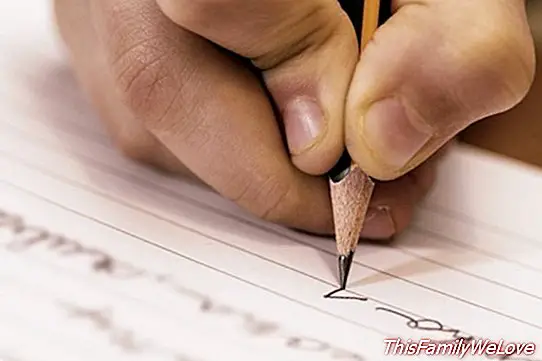Benefits of calligraphy for children
With so many screens and so many keyboards we sometimes forget that we can also write by hand using pencils or pens. The calligraphy by hand is not only a skill that is worth mastering for its usefulness, but also has numerous benefits both intellectually and in the motor apparatus. Some results that are being lost due to the expansion of new technologies.
Therefore, it is worth remembering these benefits of calligraphy as an activity in the little ones. A practice with which to develop certain capacities in the child and of which the teacher of Early Childhood Noelia Martínez Fernández in one of his works. A good test for parents to bet on this method in the upbringing of their children and that is perfectly compatible with the use of new technologies.
Motor and mental development: the benefits of calligraphy
As has been said, calligraphy provides the child with both physical abilities, in the motor apparatus, and intellectual level. These are several of them:
- Reinforcement of fine motor skills. Maintain the pulse, make strokes using pencils, all this helps the motor improve and also enhances the brain-upper extremities connection.
- Improvement of memory. There are many letters, symbols and other aspects that have to be remembered, as well as their tracings.
- Improvement of reading level by recognizing more easily letters and symbols that make up the texts.
- It is not incompatible with the use of new technologiesace. In fact, the calligraphy contributes to a better writing of post and typewritten texts since paper commits less mistakes in spelling, something that translates into digital writing.
- It favors concentration. Although children do not realize, when writing, they must pay attention to the paper and the line to be made, so that their capacity for concentration is enhanced during these moments. A good exercise to enhance this ability.

Tips to promote calligraphy
Once you have seen the benefits of calligraphy in children, you have to ask yourself, how can you enhance this skill in them? These are some tips to get it done correctly:
- The child's position. The back has to be straight and slightly inclined forward. The head aligned with the body (neither crooked nor leaning on the table). To write by hand, the forearms should rest on the table at a right angle. The forearm of the dominant hand must be inside the paper and the hand must go below the writing line. Special care must be taken in the case of left-handers, who tend to pass their hands over the line on which they are writing. The non-dominant hand should hold the paper. The feet, supported on the ground. If it does not arrive you can use a footrest. The legs should form a right angle with the body.
- The grip of the pencil. The pencil is held with the semi-flexed thumb and index finger, at a distance of approximately two centimeters from the tip, and rests on the middle finger. It is necessary not to exert excessive pressure with the fingers, because it is lost in precision and speed, and the hand fatigue is increased.
- The position of the paper. At the time of placing the paper we must differentiate between left-handed and right-handed. For right-handers we will place the paper on the right side of the table and slightly tilted to the left. Lefties will place it on the left side, tilting it to the right.
Damián Montero




